
Captain Akira Tanaka thought of a decomposing carcass of a dead whale, in fact he ordered it thrown back into the sea before it infected the catch. The other fishermen weren’t so sure it was a whale and thought of a giant sea turtle with its shell off. Years later, various reconstructions of what happened were carried out and some presented two different main hypotheses. The first is that the one caught was the carcass in an advanced state of decomposition of a basking shark, the second is that the one caught could represent a “modern” version of plesiosaur (officially extinct for millions of years):

What emerged was truly unprecedented: at first glance it actually seemed that those photographed were the remains of a creature belonging to the Plesiosaur family, large marine reptiles that could reach lengths exceeding 15 meters, lived between the Upper Triassic (which began about 330 million years ago) and the Upper Cretaceous (which ended about 65 million years ago). The news had great prominence in the Japanese media:

In the area subject to the strange fishing there is a subtropical convergence where the currents flowing south and north meet. Nasu suggested that the hulk would move south after being offloaded, ending up south of the Chatham Rise. Upon returning to the Taiyo Fishery Company headquarters in Tokyo, Yano shared photos of him with Dr. Fujio Yasuda, a professor of ichthyology at Tokyo Fishery University. Yasuda shared them with other scientists, aiming to see if ZMC could be identified. Apparently one or two vessels returned to the spot in an attempt to fish up the hulk, without success. Dr. Tadayoshi Sasaki, president of the Tokyo Fisheries University, thought the best course of action was to hold a scientific symposium: He invited 12 ichthyologists, mammologists, biochemists and other scientists for a formal meeting on September 1, 1977, and also held a second larger meeting on 19 September. – Continues after commercial – A number of technical papers were presented, all published in a special report published by the Société Franco-Japonaise d’Océanographie in Tokyo. At the time, the most popular suggestion among scientists was that the ZMC was that of a very large shark, specifically a basking shark:
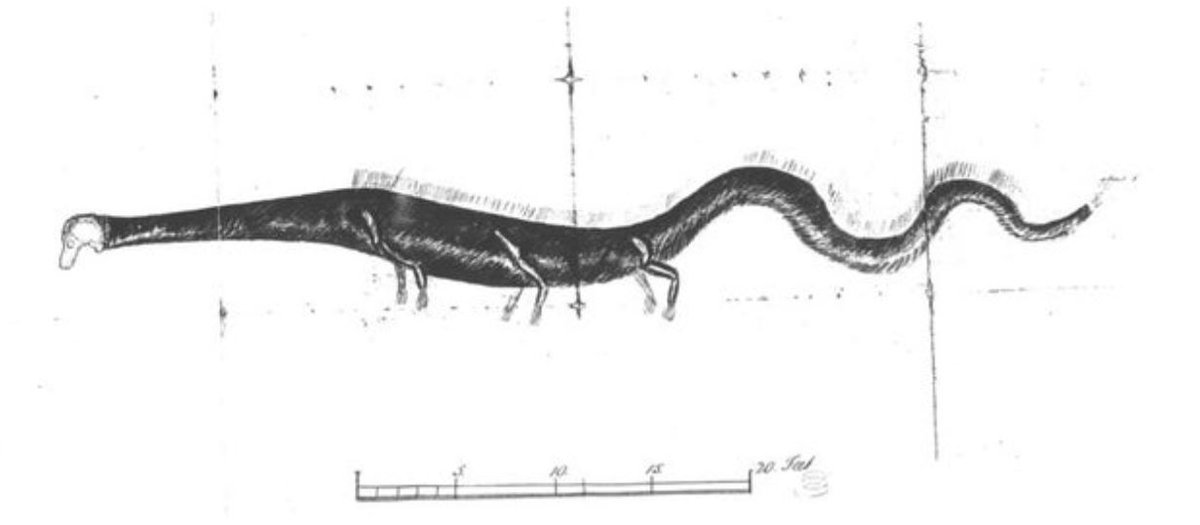
The vertebrae and other fragments of the carcass were preserved and studied by Sir Everard Home — and numerous details showed that they were basking shark remains… #sharks
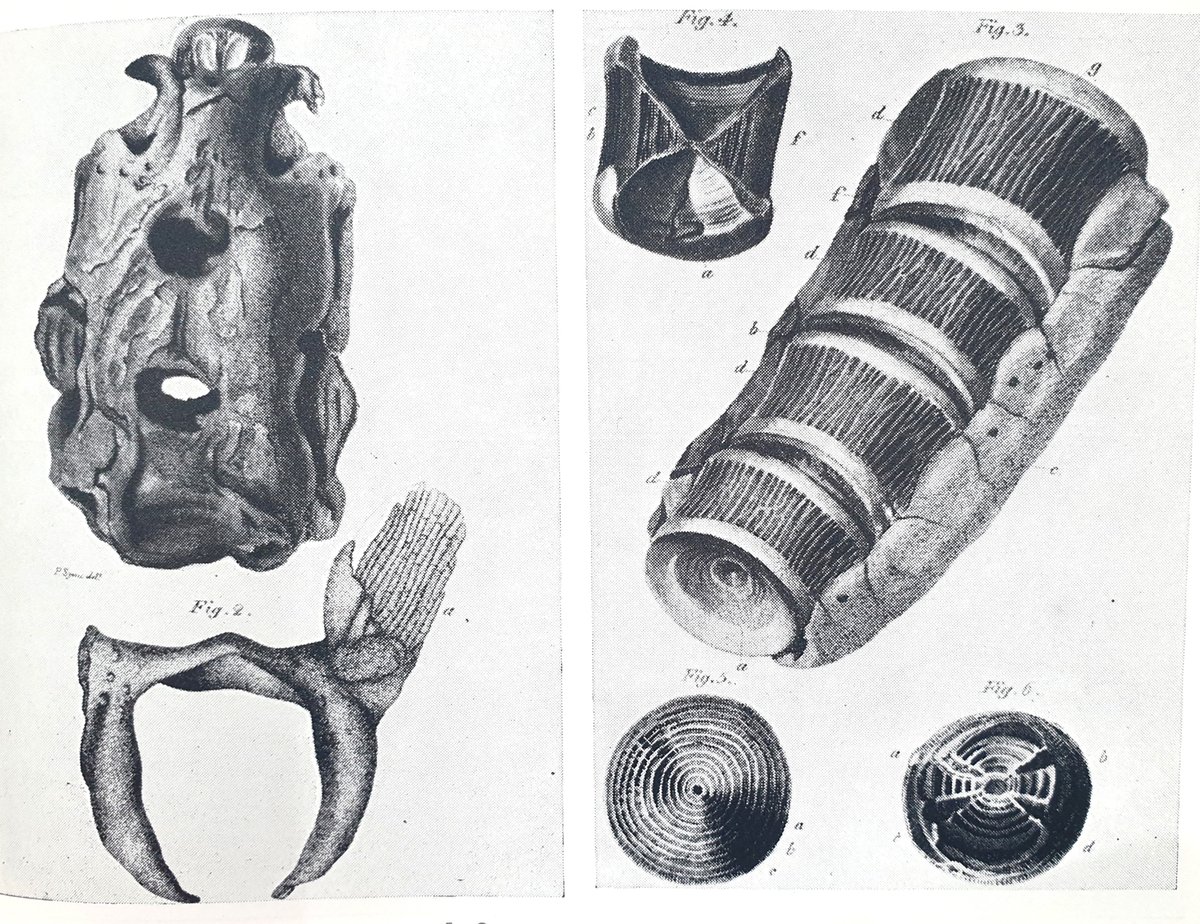
Another example is the 1941 Scapa Flow carcass, also found on Orkney and implied to be from a plesiosaur-like monster until it was identified as another basking shark carcass…
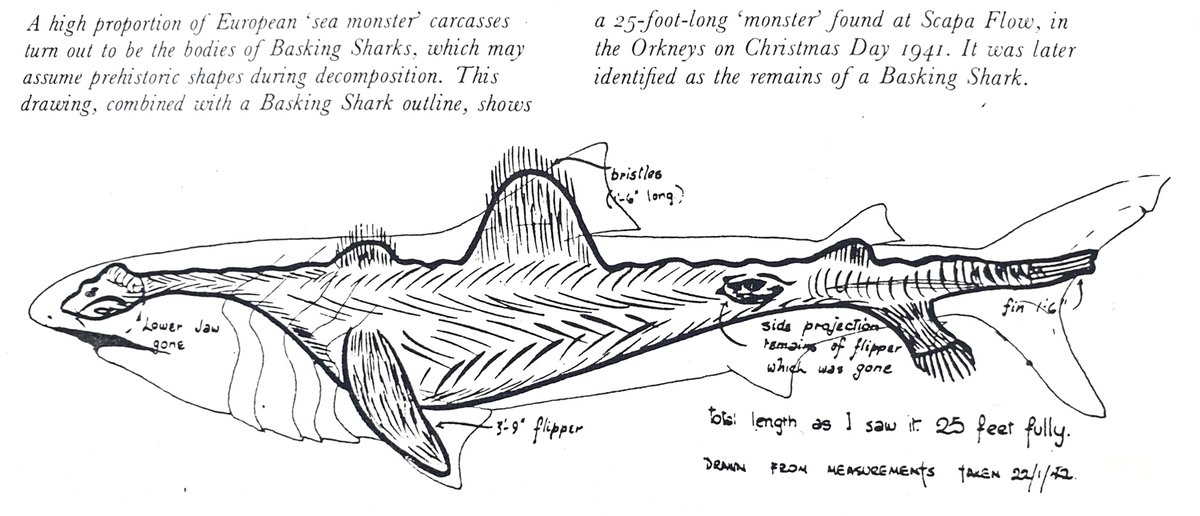
What happens during shark decomposition is that the jaws and gill arches fall off, leaving only the chondrocranium, the dorsal and caudal fins break or fall off, simplifying the shape of the carcass, and the outer surface decays to produce a fibrous or “hairy”… The result is what is known as a “pseudo-plesiosaur” carcass (illustrated here by Bernard Heuvelmans, Glen Kuban and Markus Hemmler). This stuff is very familiar if you know the literature on sea monsters or on #cryptozoology : it is covered in almost every book and… – Continues after commercial – … it was always a bit surprising that Yano and the other people promoting the identification of a “monster” for the ZMC were unaware of it… Incidentally, “pseudo-plesiosaur” is often attributed to author Daniel Cohen (note: not French economist Daniel Cohen). But this is not right: it was used by Bernard Heuvelmans in his 1965 Le Grand Serpent de Mer (and its English translation In the Wake of the Sea-Serpents)…
Yano’s photos also demonstrate the #shark nature of the ZMC. The skull of the ZMC is not at all like a tetrapod: it is amorphous in shape and covered with long spine-like filaments which are never a feature of the tetrapod skull, and…
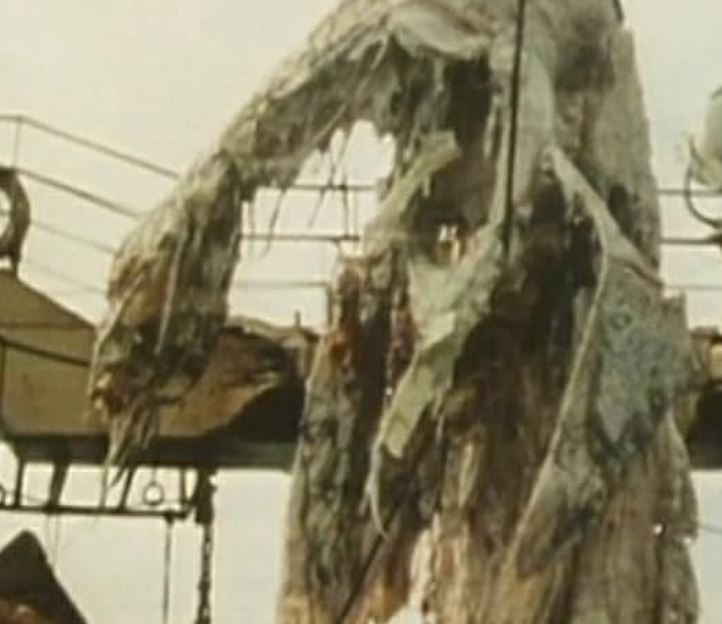
…. some views demonstrate the presence of the prominent dorsal opening – the epiphyseal foramen – characteristic of #sharks (and also evident in Stronsay’s braincase, as shown here); editing by Markus Hemmler …

Also the ventral surface of the ZMC ‘skull’ (which we can see in the photo where it lies on the bridge) is identical in shape to the chondrocranium of the basking shark: note the triangular shape, the pointed rostrum and the flared processes in the posterior part (montage by Markus Hemmler)…
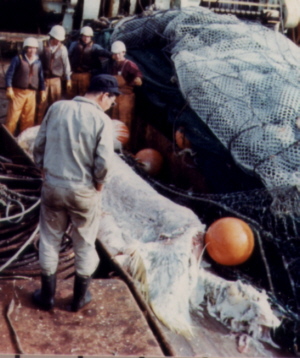
Photos of Yano’s carcass are very good and high enough resolution from the large, zoomed in versions reveal a great level of detail. However, decades later, they still remain shrouded in a (slight?) aura of mystery:
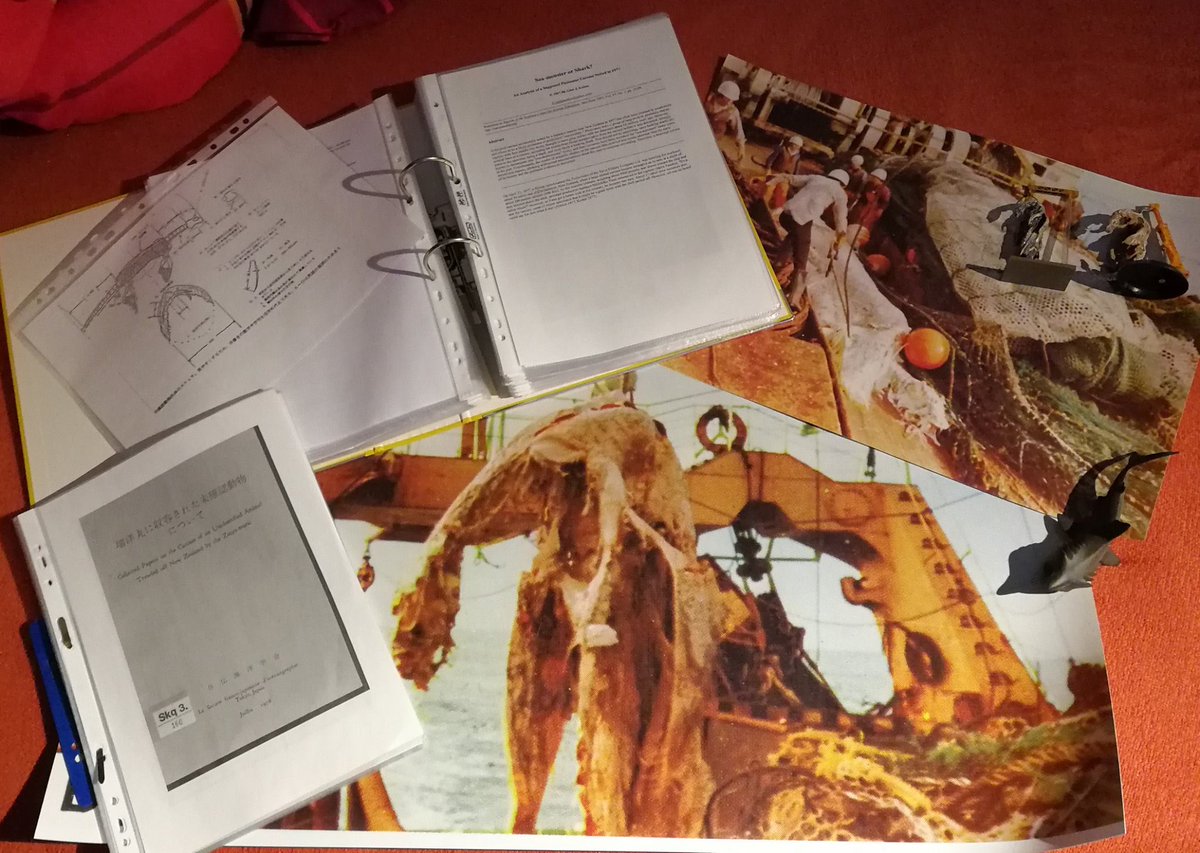
However, the fin configuration of the ZMC is also that of a shark. Yano thought a large fin that flipped over to the right side of the carcass was a huge right pectoral fin, but photos showing the carcass from behind reveal it is not a pectoral fin, but a dorsal fin. As Hasegawa and Uyeno said in 1978 “the position is too high and close to the spine to be [a] pectoral fin.” Needless to say, this large dorsal fin is consistent with the identification of a shark (drawing by Glen Kuban). #cryptozoology #monsters
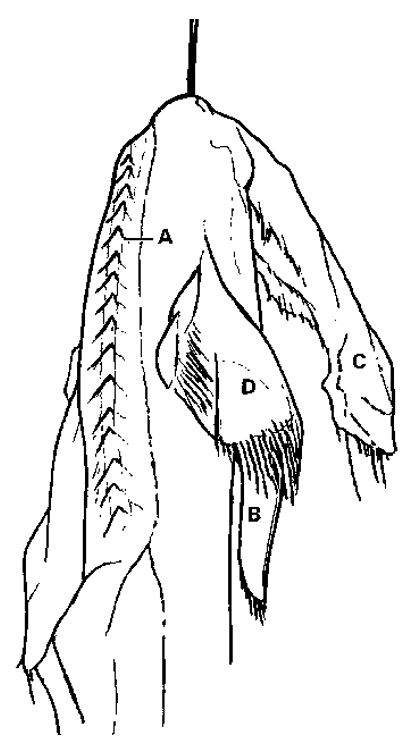
Kimura et al. they were aware of this and so they took a control fiber from a basking shark and treated it with bleach as well, as a result, the tyrosine and histidine cause decomposition. The use of bleach explained what initially seemed like an abnormal result. For completeness I add that Kimura et al. found that ZMC fibers differ from basking shark fibers in what are known as reducible crosslinks (chemical components that link polymer chains); ZMC fibers had a low number of crosslinks compared to elastoidin. But crosslinks are known to be very prone to decomposition, and their reduction was almost certainly also a consequence of the bleach treatment. All in all, there are pretty solid reasons to conclude that the ZMC fibers were indeed those of a basking shark, ergo the whole carcass was that of a basking shark or, at the very least, “a closely related species.”
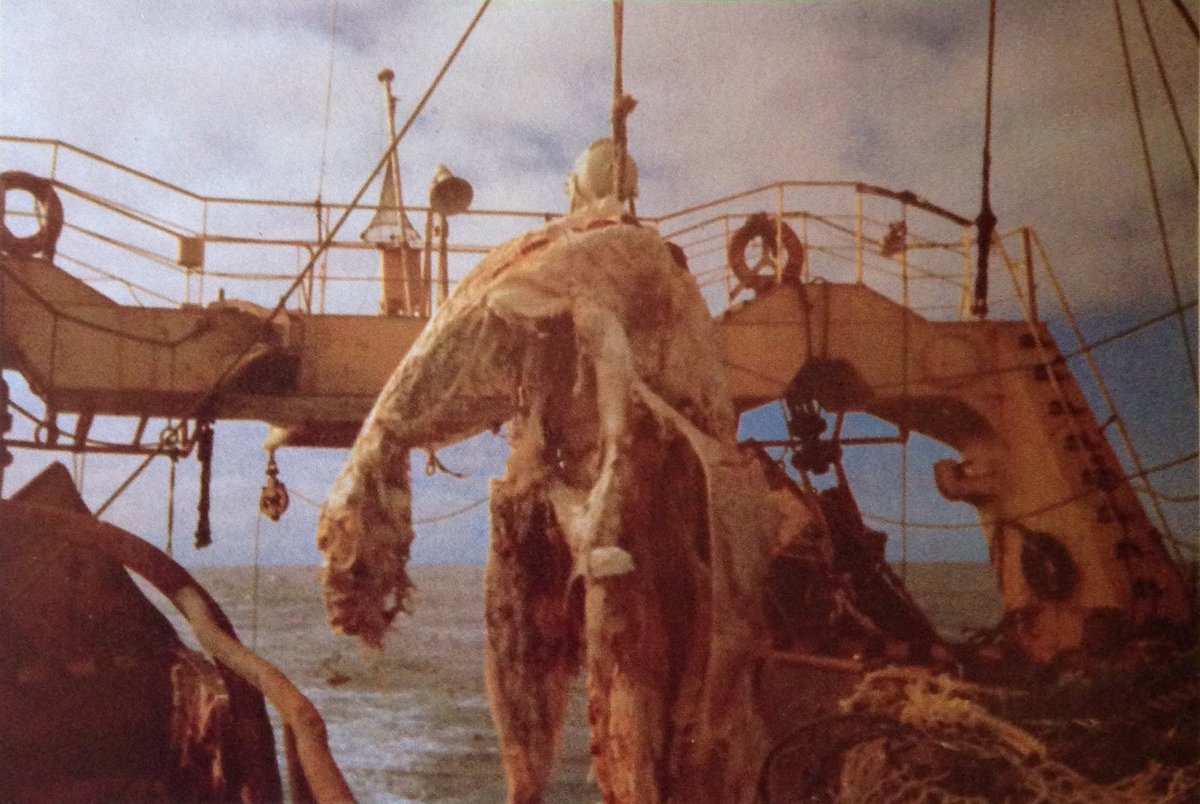
There are apparently claims here and there that the DNA from the carcass was tested and found to be that of a plesiosaur. But this is totally false and the DNA tests have never been performed (or, if they are, the results have not been released). Add ALL of this together and it’s safe to say that the idea that the ZMC is a “real” sea monster carcass is essentially dead. Cryptozoologists have tended to discuss the case as an interesting historical footnote or cautionary tale, and… … I’m not aware of any recent authors who go into mystery selling and push the Hulk as a potential mystery still worth considering… Of course, there are cases of hoax out there in the “paranormal” literature… here is a classic one from the 1988 PG Tips book Unexplained Mystery of the World, by former @forteantimes editor Robert Rickard… #monsters #cryptozoology
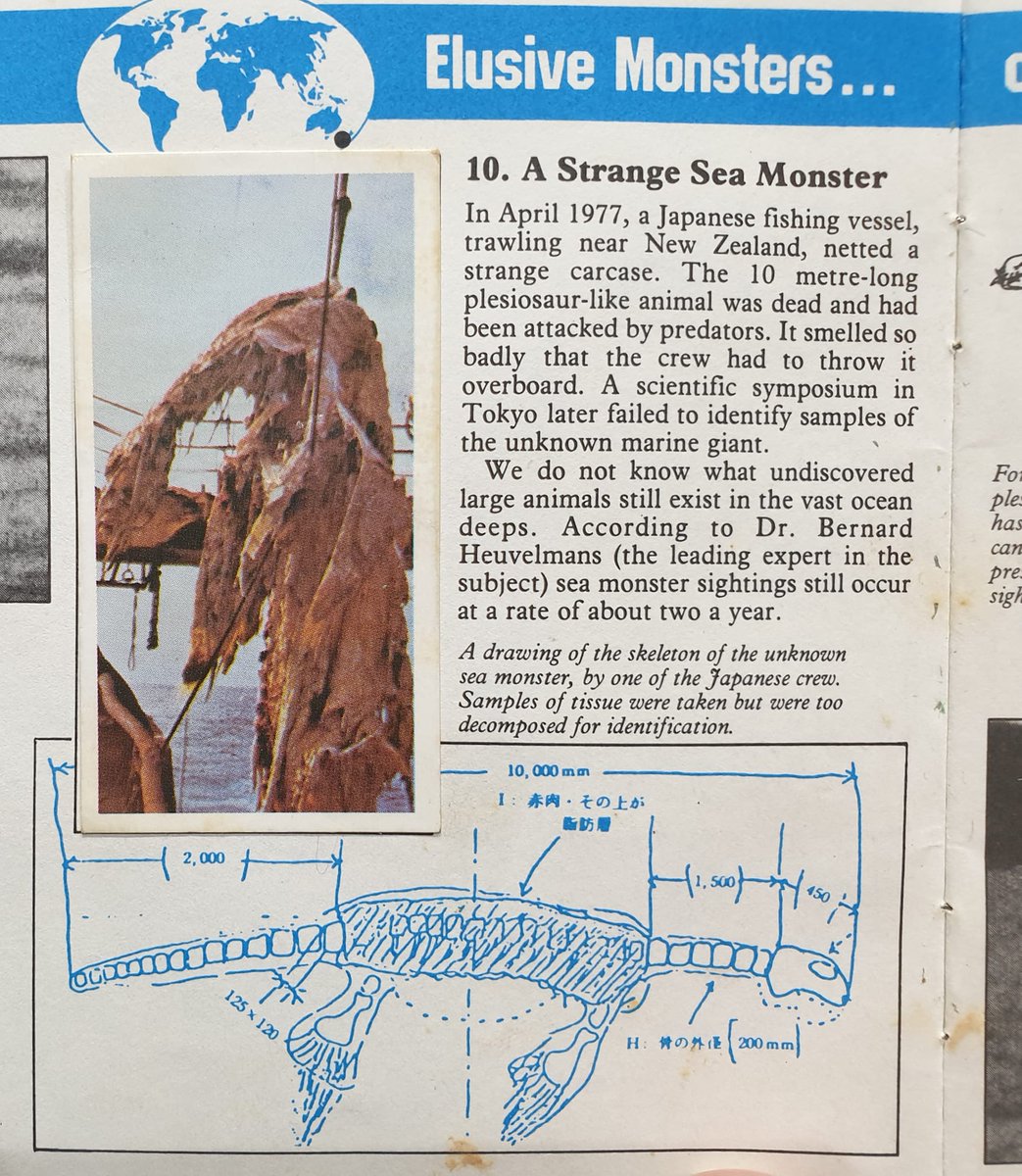
Cryptozoologist Scott Mardis has continued (informally and not in print as far as I know) to imply that the carcass may not have been that of a shark, in part because he argues that plesiosaurs may have had fibers in their fins. In the book The Cryptozoologicon a hypothetical reconstruction of the plesiosaur was imagined: It was supposed to be a tattered zombie-like creature with barbels, spines, wattles, and a tentacle-like organ on its chest. The authors of the imaginative hypothesis have decided to call it Zuiyomaruzoon necrosimulacrum. Imagined this way, perhaps it could be a stealthy benthic predator of lumpy bottoms:
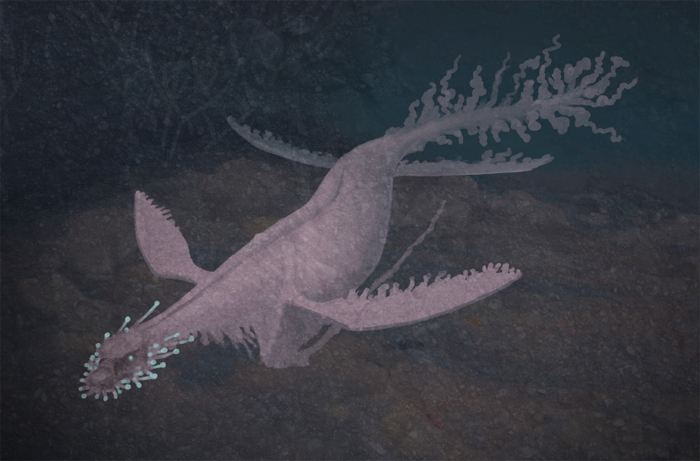
Although exactly what creature it could be is difficult to imagine. It’s easy to misunderstand the whole point of The Cryptozoologicon, although I’m pleased to say that not many people have. We were deliberately indulging in “creature construction” of the type seen throughout the cryptozoological literature, transforming anecdotally reported creatures into “reasonable” animals with an ecological and evolutionary backstory, despite the fact that such efforts are doomed to failure. #cryptozoology #seamonsters
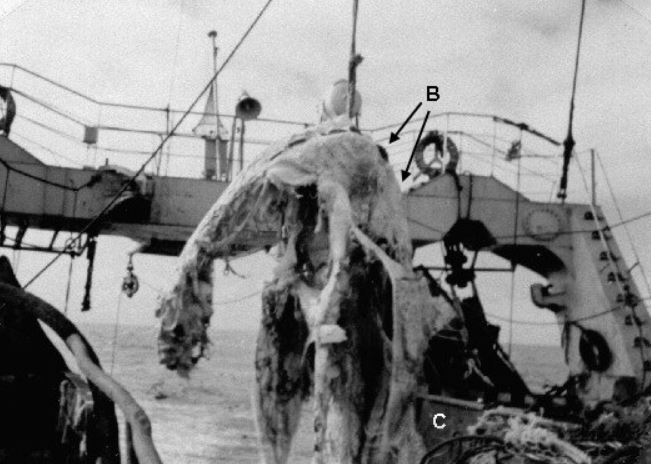
…which (based on some illustrations of what Goertzen says were plesiosaurs, drawn by ancient people like Indigenous Australians: see “B” here) Goertzen says are a feature of plesiosaurs…
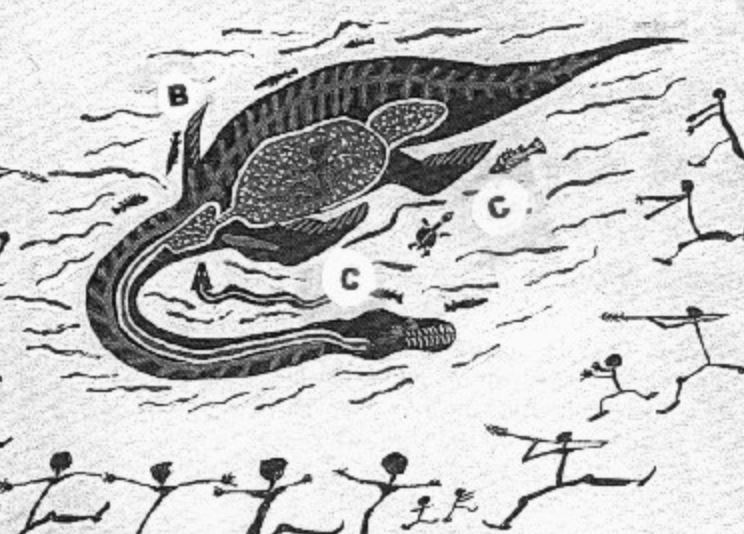
Last updated on December 14th, 2022